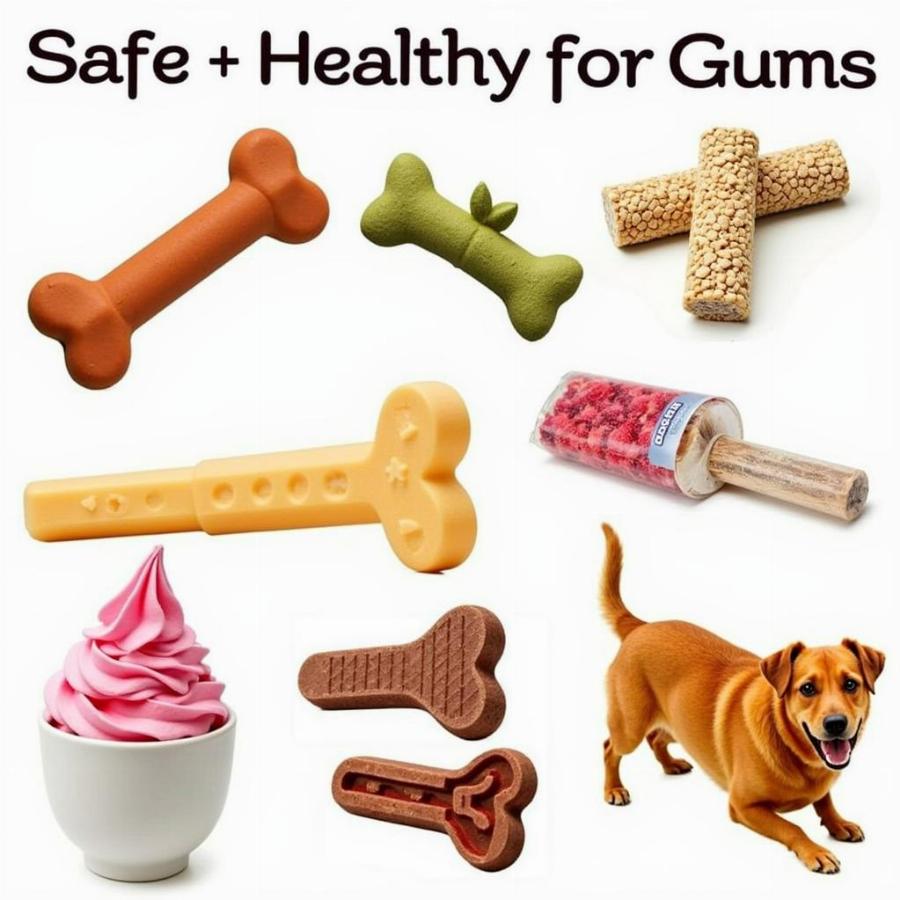Xylitol-free gum might seem harmless, but can dogs eat it? The short answer is: it’s best to avoid it. While the absence of xylitol removes the most significant danger, other ingredients in gum can still pose problems for our canine companions. This article will delve into the reasons why xylitol-free gum isn’t recommended for dogs, explore safer alternatives, and provide essential guidance on keeping your furry friend healthy and happy.
Understanding the Risks of Xylitol-Free Gum for Dogs
Even without xylitol, gum can contain artificial sweeteners, flavors, and preservatives that are not easily digestible by dogs. These ingredients can cause gastrointestinal upset, including vomiting, diarrhea, and abdominal pain.
Some gums also contain a base that gives it its chewy texture. This base is often made of polymers that are indigestible and can create blockages in a dog’s digestive system, especially in smaller breeds. Imagine a tiny chihuahua trying to process a wad of gum! The results could be serious, potentially requiring veterinary intervention.
Furthermore, the act of chewing gum itself can be hazardous for dogs. They may swallow large pieces, leading to choking hazards or, as mentioned earlier, blockages. The sticky nature of gum can also cause it to become lodged in their teeth or along their digestive tract.
Why Xylitol is So Dangerous
It’s crucial to reiterate the severe danger xylitol poses to dogs. While this article focuses on xylitol-free gum, many gums on the market do contain xylitol. Even small amounts of xylitol can cause a rapid release of insulin in dogs, leading to a dangerous drop in blood sugar (hypoglycemia). This can result in weakness, seizures, liver failure, and even death.
If you suspect your dog has ingested xylitol, contact your veterinarian or an emergency animal hospital immediately. Time is of the essence in these situations.
Safe Treats and Chews for Your Dog
Instead of giving your dog gum, even the xylitol-free variety, opt for dog-specific treats and chews designed to be both safe and enjoyable. These can include:
- Dental chews: These help clean teeth and freshen breath.
- Durable toys: These satisfy the chewing instinct and provide mental stimulation.
- Frozen treats: These can be a refreshing and soothing option, especially during hot weather.
Always check the ingredients of any treat or chew to ensure they are appropriate for your dog’s age, size, and any specific dietary needs.
What To Do If Your Dog Eats Xylitol-Free Gum
If your dog manages to snag a piece of xylitol-free gum, monitor them closely for any signs of digestive upset. If they exhibit vomiting, diarrhea, or lethargy, contact your veterinarian. While the gum itself is unlikely to be toxic, any unusual symptoms warrant professional advice.
 Safe Treats for Dogs
Safe Treats for Dogs
Conclusion
While xylitol-free gum eliminates the most severe threat to your dog’s health, it’s still not recommended. The potential for digestive issues and blockages makes it an unnecessary risk. Plenty of safer and more enjoyable alternatives are available to satisfy your dog’s chewing instinct and keep them happy and healthy. Remember, when it comes to your furry friend’s well-being, it’s always better to err on the side of caution.
FAQ
- Is all gum toxic to dogs? No, not all gum is toxic, but most contain ingredients that are not good for dogs. Xylitol-containing gum is highly toxic.
- What are the signs of xylitol poisoning? Weakness, vomiting, seizures, lack of coordination, and jaundice.
- What should I do if my dog eats gum with xylitol? Contact your vet or an emergency animal hospital immediately.
- Are there any safe chews for my dog? Yes, many dental chews and durable toys are specifically designed for dogs.
- Can I give my dog human food as treats? Some human foods are safe for dogs, but many are not. Always research before giving your dog any human food.